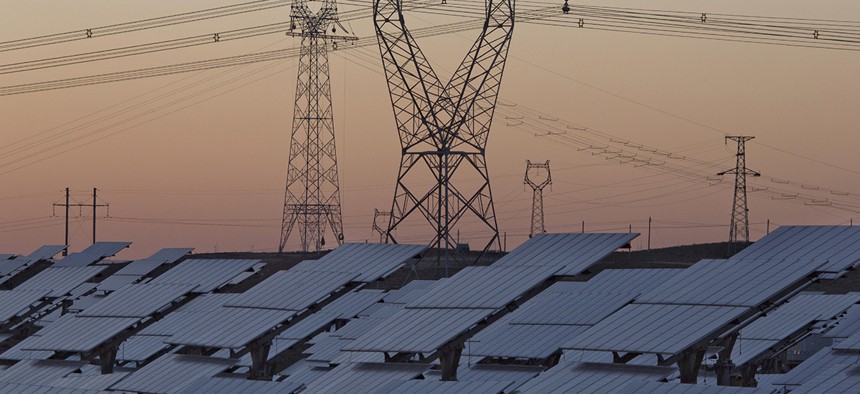These New Solar Panels Can Create Electricity from Raindrops

Solar panels are seen near the power grid in northwestern China's Ningxia Hui autonomous region. Ng Han Guan/AP
This could prove to be a significant step toward creating solar cells that work even when the sun isn’t shining.
Scientists in China are developing a solar panel that could be used to generate power from an unlikely source—rain.
Graphene, which consists of just a single layer of carbon atoms arranged in a honeycomb structure, was discovered a decade ago and has been put to several scientific uses. Previous work has established that it is possible to produce electricity by exposing graphene to salt water.
Researchers led by Qunwei Tang from Ocean University of China determined that this effect could be used in solar panels in work was published in the German Chemical Society’s journal Angewandte Chemie last month..
Here’s how their planned solar panel would work. Raindrops would form a layer of positive ions, which are found in the salt of rainwater. Meanwhile, graphene is rich with delocalized electrons—which are free to move around. This forms a double layer—where positive and negative charges are separated—creating an electric potential between them. The separation in the double layer creates a voltage, just like in a battery.
The test panel was able to generate hundreds of microvolts, which is tiny compared to a standard AA battery. The energy conversion stood at about 7 percent, which is also much smaller compared to the nearly 20 percent energy conversion achieved by the best solar cells available on the market.
The graphene-coated solar panel was tested using salt water that is far saltier than rainwater. Plain rainwater contains far fewer ions than the salt water used by the researchers. And it will take further work to refine the design and create a product that can be put to practical use. Mass-produced graphene, for instance, still remains a difficult prospect.
Researchers counter the limitations by admitting that they were only hoping to establish a “proof of concept.” If they can drastically improve future versions, it could prove to be a significant step towards creating solar cells that work even when the sun isn’t shining.
NEXT STORY: SpaceX's Reusable Rocket Makes Historic Landing





